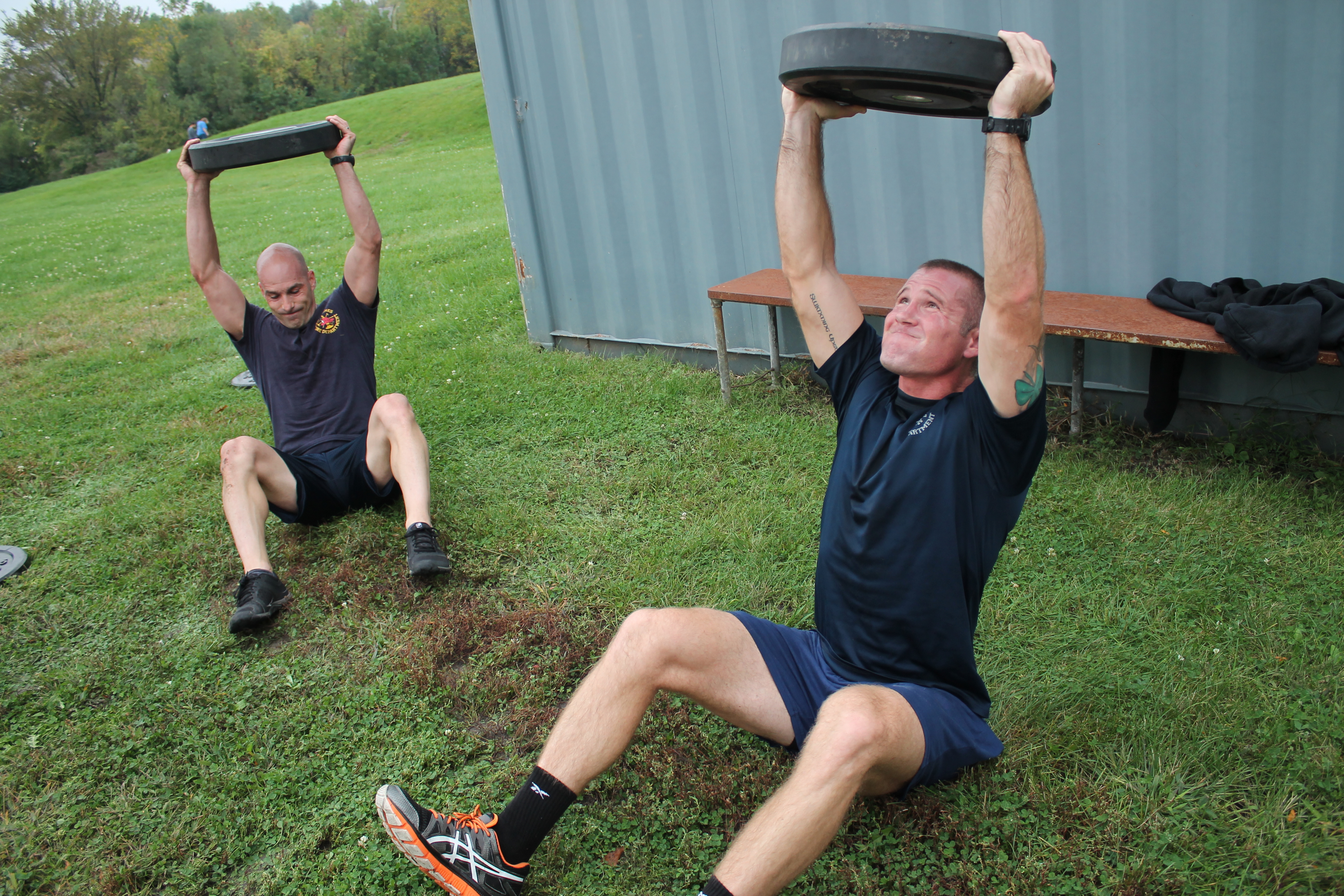I spent a week in Des Moines teaching a programming course, but mostly learning about the work, schedule and fitness demands of Fire/Rescue Athletes.I was invited to Des Moines by Capt. Joe Hogan, whom I had helped develop a training program for candidates at his fire academy.
Fire/Rescue athletes are similar to law enforcement athletes in that they are “industrial” athletes who don’t get paid unless they can physically do the job, have loaded work capacity, strength and stamina demands, never have an “off-season” and don’t have a strong tradition or culture of fitness.
Captain Hogan sent me his thoughts on the fitness demands for fire/rescue athletes. His thoughts are below – and we’d appreciate your thoughts.
Please email any questions, feedback or comments to coach@mtntactical.com
– Rob Shaul
Fitness Demands of a Fire/Rescue Athlete
By Capt. Joe Hogan, DMFD
1. Work under a load.
All fireground work is done in heavy protective clothing and usually SCBA. Technical rescue and even EMS are also often performed while load-bearing also.
2. Lifting and moving.
Emergency operations require the movement of heavy equipment into and out of the work area as well as the possibility of moving victims/patients to safety.
3. Vertical movement.
Urban fire/rescue work is frequently performed above or below grade. Stairs and ladders are a common means of access/egress.
4. Pulling and grip work.
Advancing hose, hoisting ladders, pulling ceiling, and lifting/moving people are just a few examples of the pulling and grip strength workload.
5. Explosive movement.
Swinging hand tools, operating a nozzle and starting power equipment all require the ability to apply power.
6. Level changes.
A routine structure fire will require frequent transitions between standing, climbing, crawling and even squeezing through confined spaces.
7. Stamina.
Twenty-four-hour shifts can drag on and every alarm is open-ended. These are long shifts with a variable workload. Stamina is critical.
8. Environmental extremes.
Extreme weather is a regular facet of the job. You will work in 100+ and well below 0.
9. No Warm Up.
There are long periods of downtime that end without warning. It is not uncommon to go from a sound sleep into a working fire, over a 5 minute span. There is no warmup period.
10. Stress.
While not a physical factor, stress does impact physical performance and health. Mental fitness is a key component in combating stress.
You Might Also Like MTI’s Fire/Rescue Training Plans
